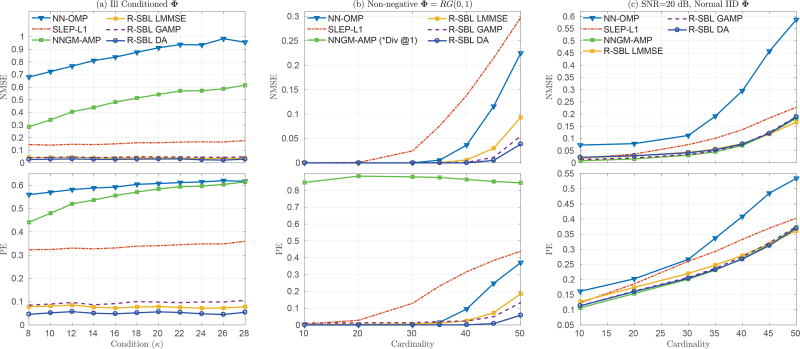Fig. 3.
Sparse recovery performances of the S-NNLS solvers for various Φ. In (a), the dictionary is ill-conditioned with condition number κ given in the x-axis. R-SBL variants outperform the baseline solvers for various κ and are very robust to the value of κ. R-SBL DA achieves the lowest NMSE and PE. SLEP-ℓ1 is superior to NNGM-AMP. In (b), the dictionary is non-negative with elements drawn from i.i.d. RG(0, 1). The recovery performances are given for various cardinality K in the x-axis. R-SBL variants achieve superior recovery across all values of K. NNGM-AMP diverges regardless of the value of K and is unable to recover a feasible solution. In (c), the dictionary is i.i.d. Normal and SNR is 20 dB. In the noisy setting, when the dictionary is i.i.d. and signed, R-SBL variants perform similar to NNGM-AMP under noisy conditions, but are superior to SLEP-ℓ1 and NN-OMP at larger cardinalities.

